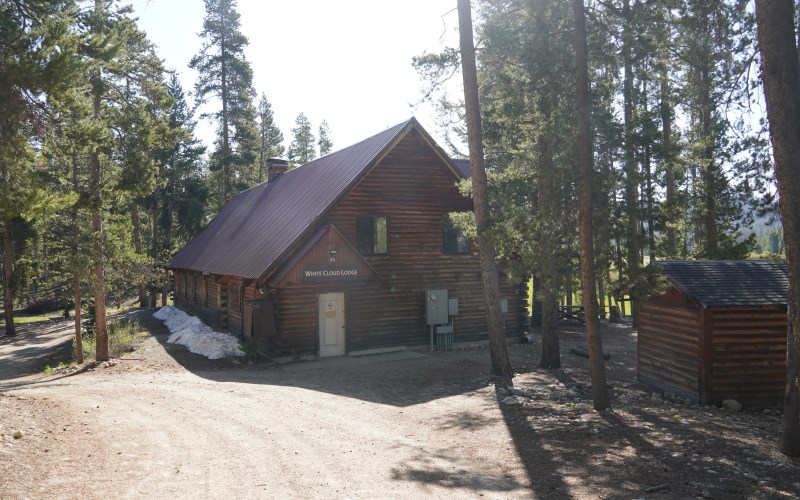|
STORY AND PHOTOS BY KAREN BOSSICK
Campers typically look at the Sawtooth Lodge nestled in the lodgepole pine forest at Luthern Heights Bible Camp and remark how beautiful it is, its reddish-brown logs framing its A-shaped roof and the long wooden staircase leading to the deck.
Sun Valley Fire Department Capt. Reid Black sees it through a different lens, noting the little things that could cause the relatively new lodge to go up in smoke should fire race through the woods around nearby Pettit Lake.
While the risk of wildfire has always been there, it’s seemed ever more present the last few years, what with the nearby Smiley Creek area getting hit in 2023 and residents of the Iron Creek neighborhood to the west of Stanley watching fire come right up to their yards last summer.
|
|

The Sawtooth Lodge is the centerpiece of Luther Heights Bible Camp near Pettit Lake.
|
|
|
Never mind that fire officials are predicting a particularly severe summer for wildfire in the West, what with snowpack melting quicker amidst a dry spring and above-average temperatures.
Black recently told a group of Stanley-area residents, Forest Service officials and others how he had made his home in Ketchum more fire wise during a two-day conference organized by the Sawtooth Society and its Sawtooth Valley Wildland Fire Collaborative. And then he led attendees on a tour around the Sawtooth Lodge as he identified areas where the risk of fire could be mitigated.
Black noted how fire departments from the Wood River Valley had raced to Smiley Creek to protect the homes there when the Ross Fork Fire blew in on a day characterized by Red Flag Warnings.
“There’s more houses out there than we have resources for, so think about: How can you make your house survive? And, if you have a neighbor within a hundred feet, have a conversation with them about: What can we do to make our space more defensible?” he said.
|
|

A wooden walkway like this one should have a metal gate or a gap near the Lodge to keep fire from racing along the walkway to the lodge, Capt. Reid Black said.
|
|
|
Black did a walk around the Sawtooth Lodge. He noted a fence leading to the lodge. If you have a wooden fence outside your house that connects to your house, put a metal gate in it to break the chain. Or leave a gap in the fence so the fire can’t crawl along the fence to your house, he advised.
One of the foremost factors in so many homes being lost in this winter’s Palisades fire in southern California was wood shake roofs. The City of Sun Valley has not allowed wooden shake roofs since 2006. And Blaine County doesn’t allow wood shake roofs, anymore, either, he said.
The lowest tree limbs should be at least three times the height of shrubs to prevent shrubs from catching a tree on fire in the event of a ground fire.
“We live here because of trees and we don’t want to lose all the trees. But the biggest source of fire in mountain areas is burning embers. You can get rid of every tree around here, but strong winds can bring embers in from a mile away.”
|
|

Needless to say, it’s better not to have a pile of brush near the cabins.
|
|
|
Place drain rock, concrete or patio brick extending at least five feet away from your home.
Try to minimize how many embers make it into your home. Google “ember resistant vents.” Box in eaves but provide ventilation to prevent condensation and mildew. Screen roof and attic vents to prevent ember entry.
Clear out vegetation around the propane tank and put rock or concrete around it.
Trim branches that overhang the home, porch and deck and clean your chimney each year.
|
|

The dirt road provides defensible space for the White Cloud Lodge.
|
|
|
“It’s these little things that will help save your house,” Black said.
Plant Firewise plants that have a high moisture content. Sprue trees, especially black spruce trees, tend to be very combustible. Aspen, by contrast have a high moisture content.
Black glanced underneath the porch of the Sawtooth lodge. It’s understandable that camp managers and others want to store things under the deck. But flammable material should never be stored there, and dead vegetation and other debris that collect under such porches should be removed, he said.
Want to learn more? Visit Firewwise USA at https://www.nfpa.org/Education-and-Research/Wildfire/Firewise-USA.
|